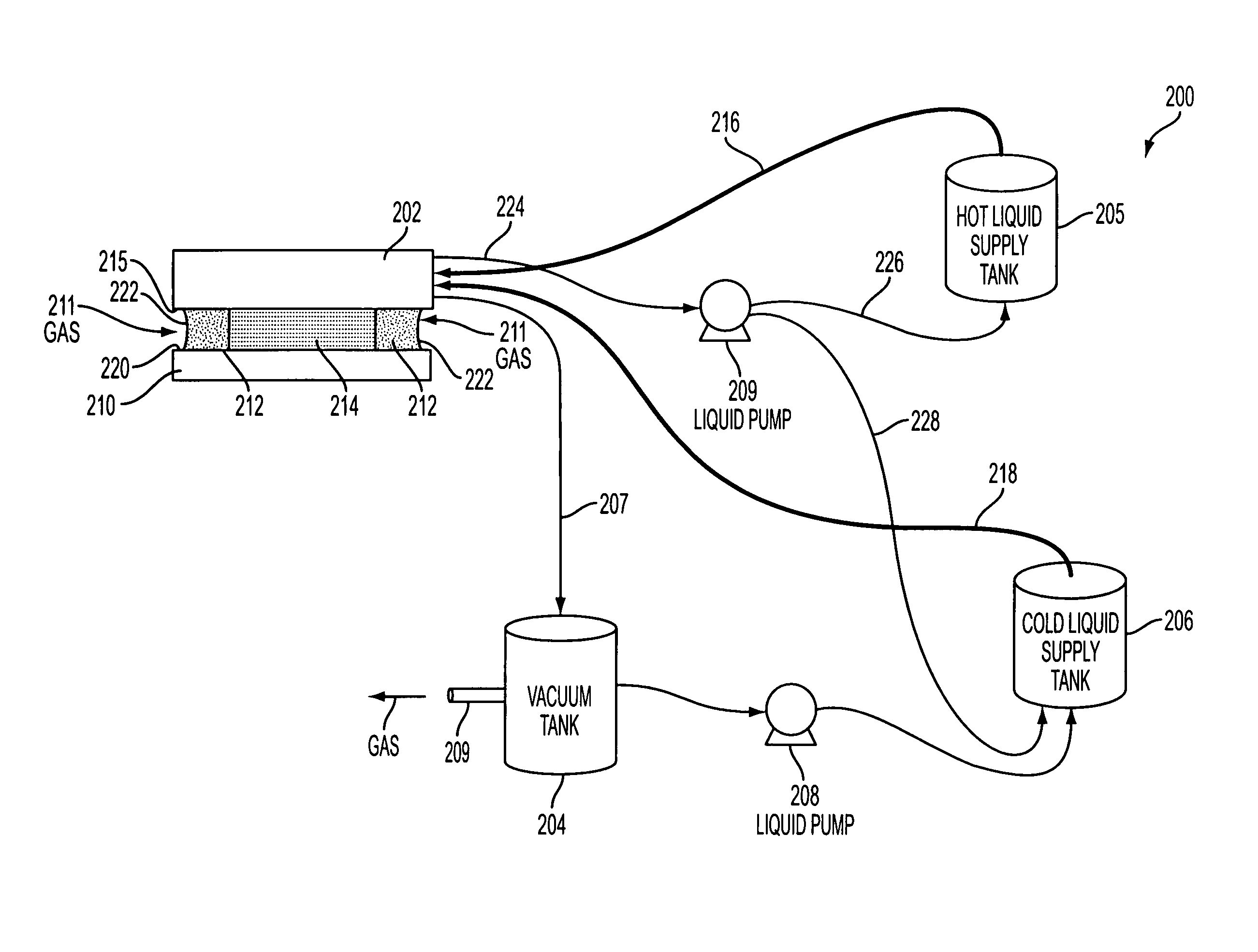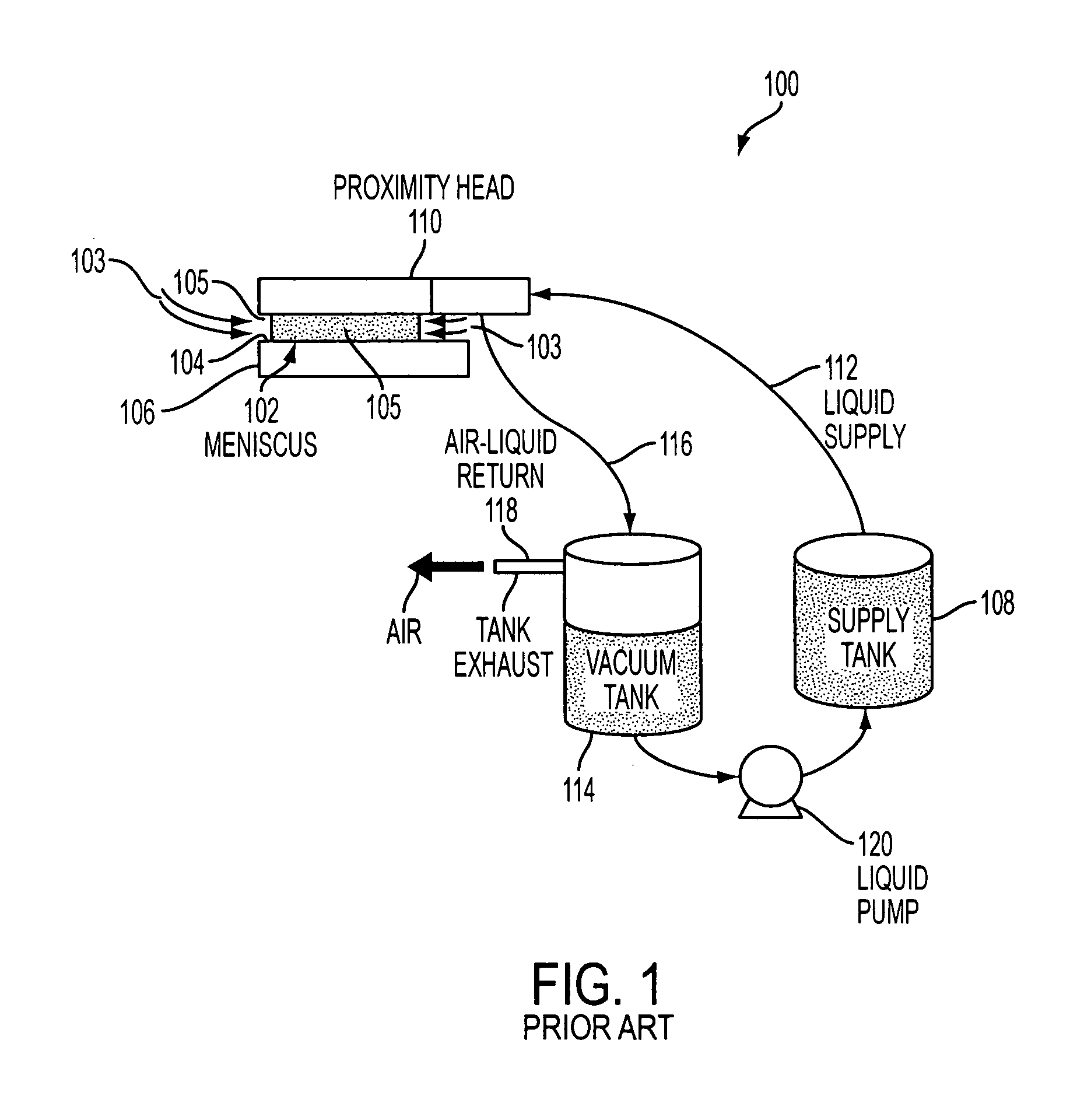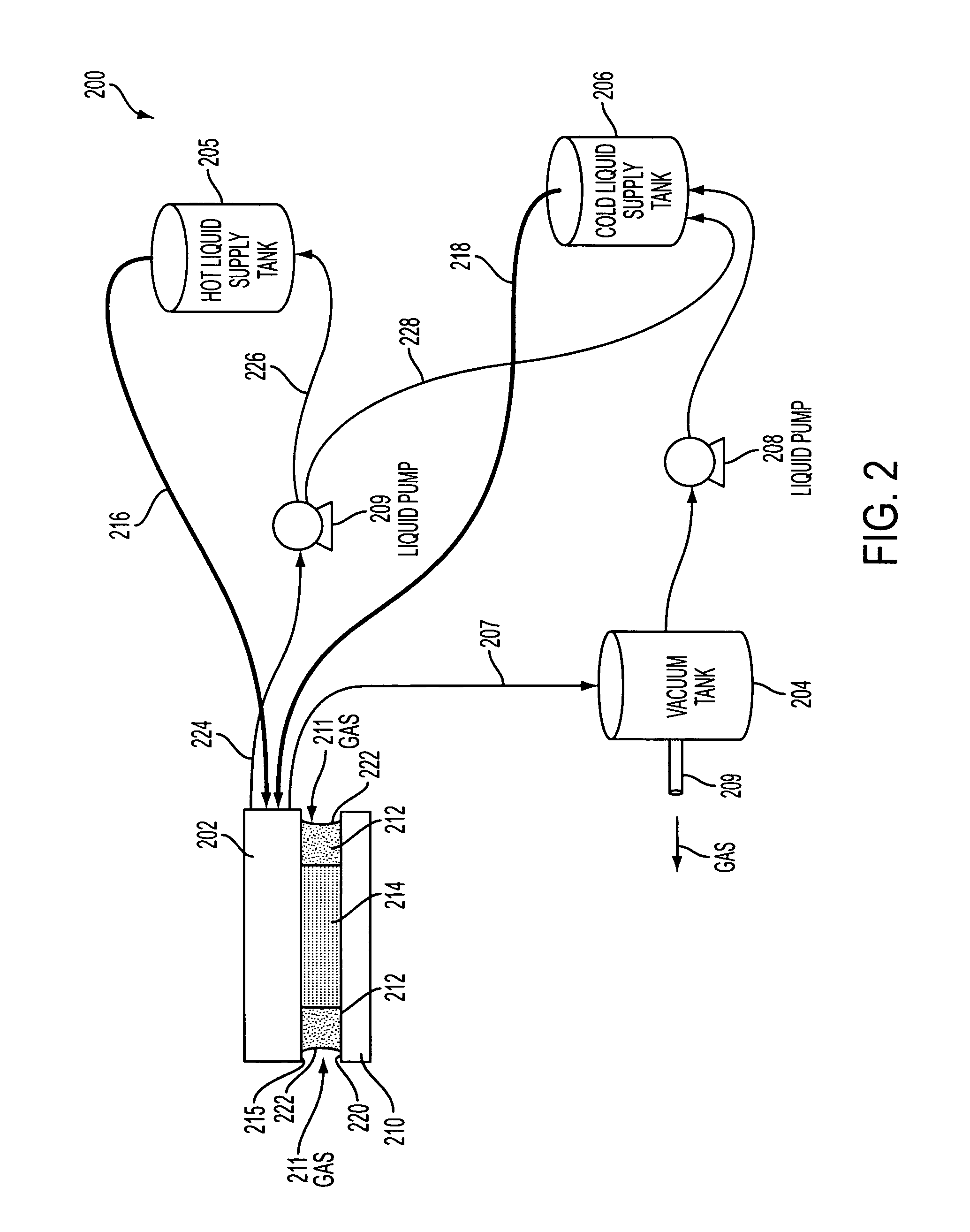Reclaim chemistry
- Summary
- Abstract
- Description
- Claims
- Application Information
AI Technical Summary
Benefits of technology
Problems solved by technology
Method used
Image
Examples
Embodiment Construction
[0019]Embodiments of the present invention provide systems, apparatus, and methods for efficiently reclaiming solvents used to process surfaces of semiconductor wafers, etc. More particularly, embodiments of the present invention provide a reclaim approach that prevents the evaporation of chemical solvents used to process wafers using proximity heads, by confining hot liquid chemistries used to form fluid menisci on the wafer surface with cold liquid chemistries of the same chemical composition. The cold liquid chemistry provides a barrier between a hot liquid chemistry and a gas-cold liquid chemistry mixed area at an outer edge of the cold fluid meniscus where significant evaporation would typically occur due to the mixing of high air flow with the hot liquid chemistry returning from the edge of a hot fluid meniscus. Likewise, the cold liquid chemistry also reduces overall chemical solvent depletion due to evaporation that can occur during standard operation of a two-phase return p...
PUM
 Login to View More
Login to View More Abstract
Description
Claims
Application Information
 Login to View More
Login to View More - R&D
- Intellectual Property
- Life Sciences
- Materials
- Tech Scout
- Unparalleled Data Quality
- Higher Quality Content
- 60% Fewer Hallucinations
Browse by: Latest US Patents, China's latest patents, Technical Efficacy Thesaurus, Application Domain, Technology Topic, Popular Technical Reports.
© 2025 PatSnap. All rights reserved.Legal|Privacy policy|Modern Slavery Act Transparency Statement|Sitemap|About US| Contact US: help@patsnap.com



